The statistics are well known: by 1841, the population of Ireland was more than eight million. More than one million died during the Great Hunger, and both during and in the aftermath about three million emigrated. Over a 50-year period, almost half of the population of the country disappeared. And the effects continue around the world, as Ireland’s diaspora is estimated to reach around 70 million.
What is new is that through images, human stories can be put on the statistics, and aspects of the Famine uncovered that bring home grim realities with belated force.
The recovery of such images was the challenge facing a museum devoted to the Famine, and Ireland's Great Hunger Museum at Quinnipiac University, Connecticut, has amassed an unparalleled collection that begins with the harrowing upheavals in the 19th century, and follows the story to the present as contemporary artists look back on events that are as yet not fully absorbed.
The focus of any such museum is complicated by the fact that cataclysmic events do not lend themselves easily to visual representation. An exhibitions programme, which begun with a retrospective of Daniel Macdonald, the artist responsible for the only known painting of the blight itself, Irish Peasant Family Discovering the Blight of their Store (1847), also defies the prescriptive canons of traditional art history, as there was no style or genre at the time capable of capturing the horrors of the Great Hunger.
In Henry Mark Anthony's Sunset (c.1847), the ruins of the Rock of Cashel tower over the more recent ruins of a society on the verge of collapse. The poverty of the countryside in which the medieval ruins stood, however, showed the abject state of that civilisation.
In Anthony’s painting we see both the aesthetic and political pressures placed on conventional art by a troubling clash of antiquity and actuality. Artists tended to fall back on the sublimity of Irish scenery or notions of a glorious past to elevate sentiments, and it is precisely against this backdrop that the dereliction in the foreground is set in stark relief.
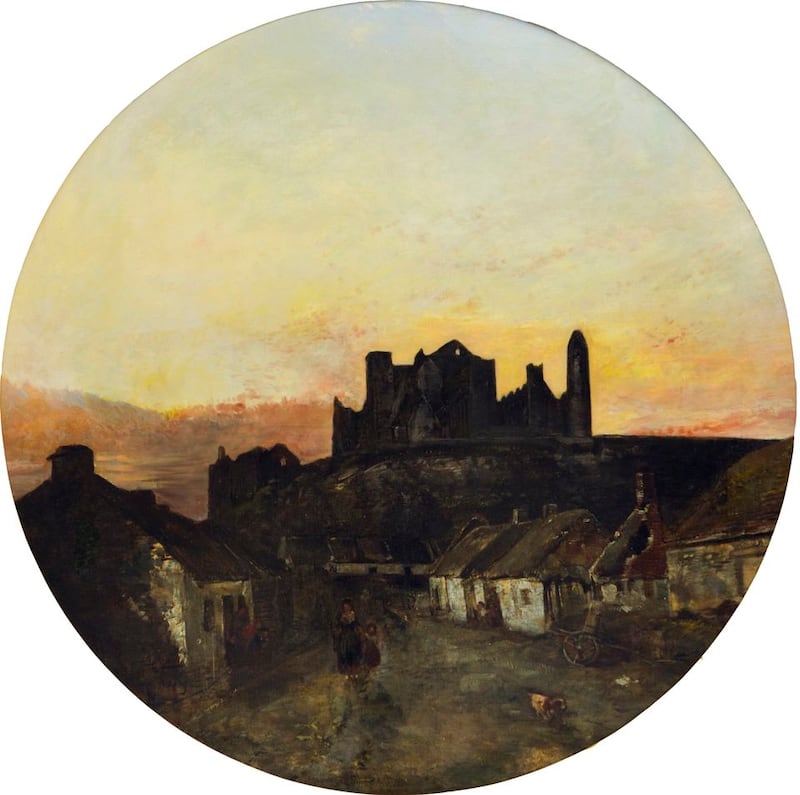
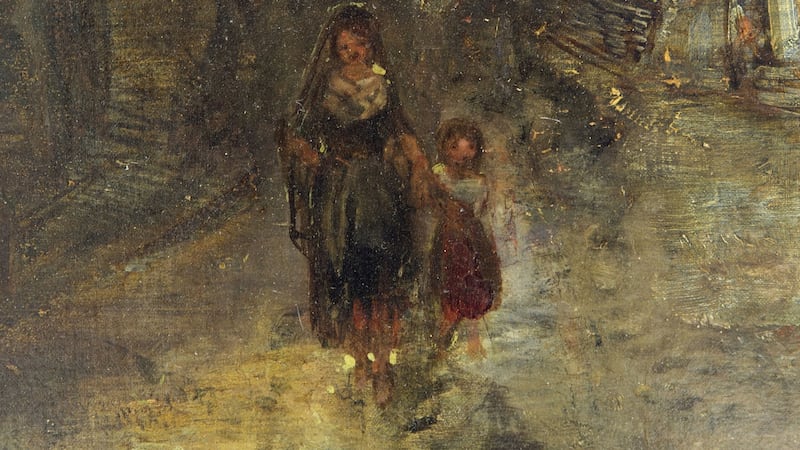
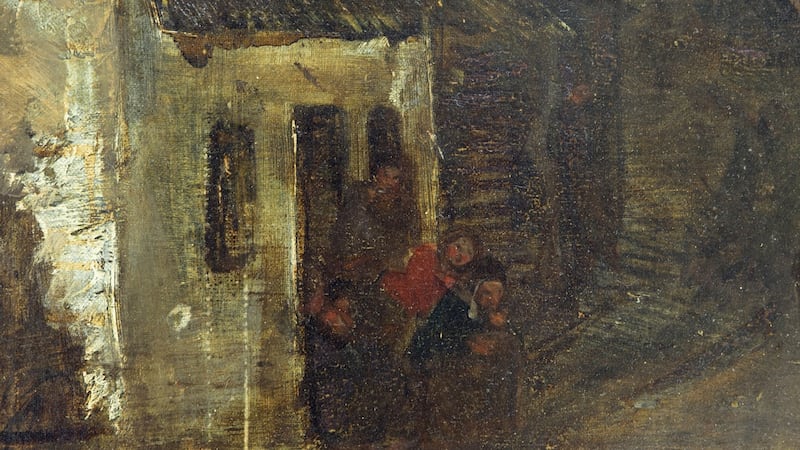
In 1885, a leader of the Métis people of Canada, Louis Riel (who had an Irish background) lamented their loss of culture: "My people will sleep for 100 years, but when they awake it will be the artists who give them back their spirit."
This could also have been said of Ireland. The 1945 centenary saw the first attempts to bring the Famine back into the visual imagination, although it was not until the 150th anniversary, from 1995, that the image finally caught up with history. The establishment of Ireland’s Great Hunger Museum in Hamden 2012 is part of this process.
As time passes, remembrance becomes more elusive. The writer David Rieff suggests that "the essence of historical remembrance consists of identification and psychological proximity rather than historical accuracy, let alone historical nuance and depth". In the case of post-Famine generations, the opportunity to represent it aesthetically had to await changes in visual styles that could absorb unsettling historical subject matter.
Instead of being a seven-year unexpected event, the Famine is best seen as a turning point in a century-long logic of disintegration, the outcome of systematic neglect by the richest empire in the world.
The conflict between the need to remember and the need to forget resulted in what many perceive as a great silence. However, the traditional practices of history – concerned with great deeds by great men, rather than voices from below – explain why the Famine, with some notable exceptions, was not central to narratives of the nation.
The term “post memory” is used to refer to the secondary memories of events experienced by the children of survivors of collective trauma, causing the offspring to “remember” the ordeals narrated to them, as if they were memories of their own. Their memories thus become our memories, placing us as guardians of the experiences with an obligation on us to find meaningful ways to remember.
If famine presented difficulties for representation, how did people around the world learn of conditions in Ireland? In the new mass-produced, illustrated newspapers, we find the rudiments of a visual record. Such illustrations may seem somewhat impotent now, but they represented a radical shift in visualisation, as pictorial journalism attempted to communicate visually the horrors. For native illustrators, such as the Cork artist James Mahony, the desire to convey the reality was balanced by the need of the newspapers to visually contain the atrocity, while he attempted to avoid compromising the humanity of the victims.
Accounts of a family struggling to a graveyard to entomb themselves in a small shed because there would be no one left to bury them, were beyond his visual powers, but Mahony would have thought it improper to try. His pictorial devices – the closed door and the back view of the victims used in The hut or watch-house in the old Chapel Yard, from Illustrated London News in 1847– work through suggestion, and occluded the indignity of dying bodies. The eloquence of his images lies in their restraint.
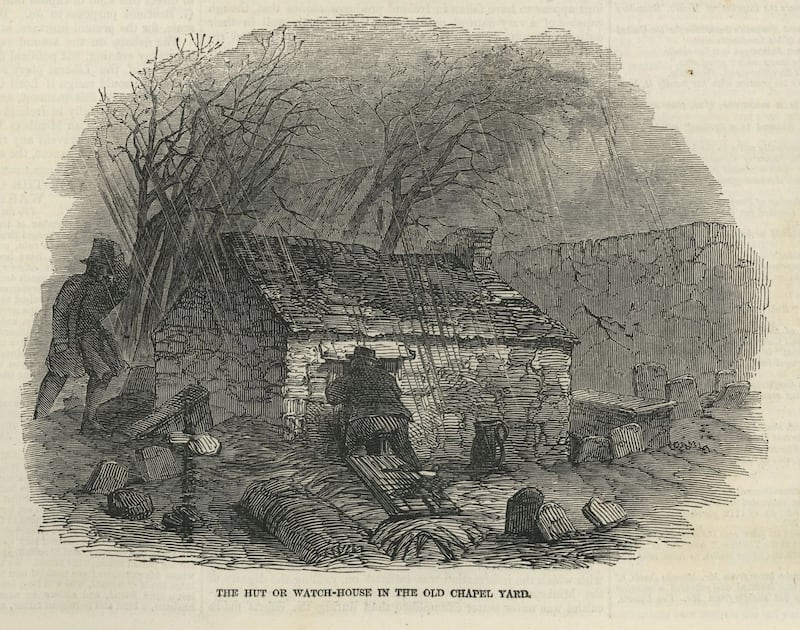
Descriptions of malnutrition – tooth loss, distended stomachs, bursting blood vessels – covered physical effects, but it was cultural and moral breakdown that also pushed life – or death – to extremes. The unflinching Skibbereen doctor, Daniel Donovan, described mothers snatching food from their starving children; knew a son who killed his father for a potato; and saw parents look on the putrid bodies of their offspring without emotion. The iconography of atrocity raises difficult ethical considerations, for in an age that prided itself on moral progress, how does one depict its absence?
Although history painting – the dominant genre – did not consider ordinary people as meriting serious treatment in art, the Famine coincided with the birth of Realism. But even this more democratic aesthetic had to be reconciled with the fact that artists painted for an elite market, for aristocratic and merchant classes who had no interest in pictures of emaciated bodies or diseased corpses. Moreover, the monetary nature of the engagement softened the focus of artists when it came to subject matter that related to the vested interest of their patrons.
While Irish artists went to Britain in pursuit of patronage, British artists came to Ireland in pursuit of the primitive. Unfamiliar they may be, but Francis Topham, Frederick Goodall, Alfred Downing Fripp and Henry Mark Anthony produced some important visual records of the culture of the peasantry.
In their work, the Victorian writer Mary Howitt perceived "the crushed and bleeding soul of the Irish people". But in the work of the more well-known Erskine Nicol, high-mindedness degenerated into prejudice, as the Irish assumed apelike features. The racialisation of poverty justified government policy, leading the Times to condemn the "wretched, indolent, half-starved tribe of savages . . . [who] have never approached the standard of the civilised world".
When charity was unable to compensate for the inadequacy of government relief, there was the workhouse, where corpses were also disposed of without shroud or coffin, wake or prayer.
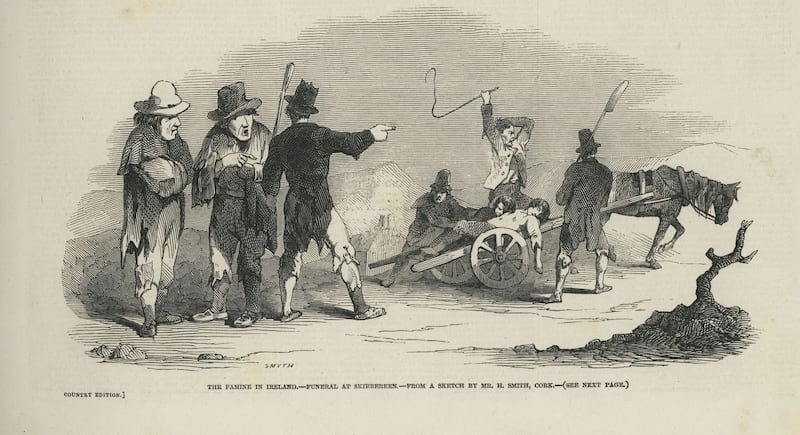
In one of the most despondent images of Famine mortality, Funeral at Skibbereen, a man brandishes his whip to drive a half-dead horse across a barren landscape, bodies slung across the cart, already 11 days dead.
The consequences of insisting the landlord be paid, regardless of the need to eat, and exporting vast amounts of food to England, were not hard to foresee. Resistance was low, but not unknown. Macdonald's Irish Faction Fighter, executed on the eve of the Famine, is not about resistance per se, but faction fights were agitations by a downtrodden people that, like agrarian protest, prefigured the agency of a "risen people".
If hunger, disease and death were too much for art, the depiction of eviction and emigration just about fitted into the new radical ordinance. Between 1846 and 1853 more than half a million people were evicted. Eviction for most meant the workhouse, or a lingering death in or by a ditch. For others, the exodus informed the genre of quayside scenes, and allowed for narrative amplification: nostalgia for the past and/or hope for the future.
As there are relatively few paintings that represent the Great Hunger itself, it is left to the museum to bridge the gaps in memory. The collection, spanning 170 years, also has several important works that contextualise and place the Great Hunger in its wider cultural and historical settings, such as Dorothy Cross's allusive Basking Shark Curragh; Jack B Yeats's landscape of Derrynane is imbued with the memory of Daniel O'Connell, both as politician and landlord, in the pre-Famine period; and Mahony's depiction of the consecration of St Mary's church in Cork, shows the Catholic Church establishing its authority within a disoriented culture in the post-Emancipation period.
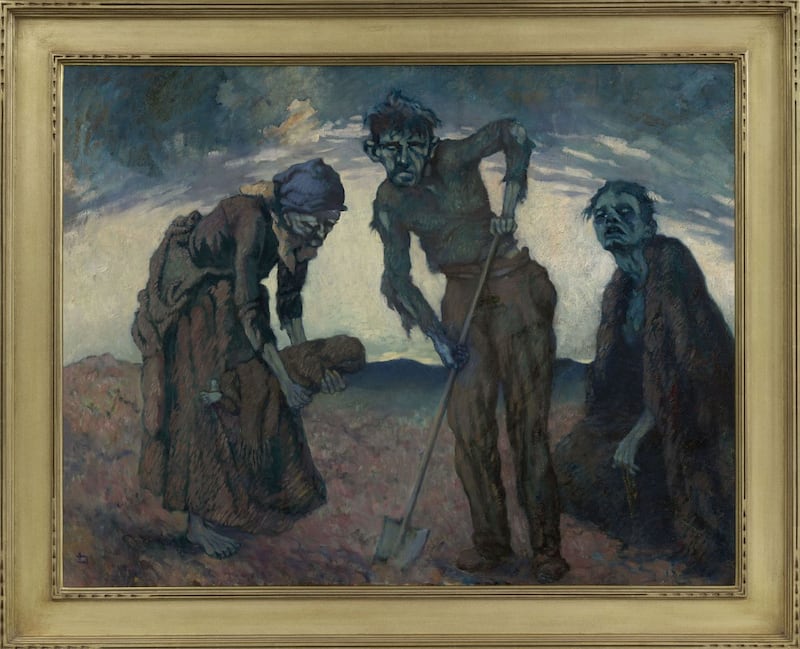
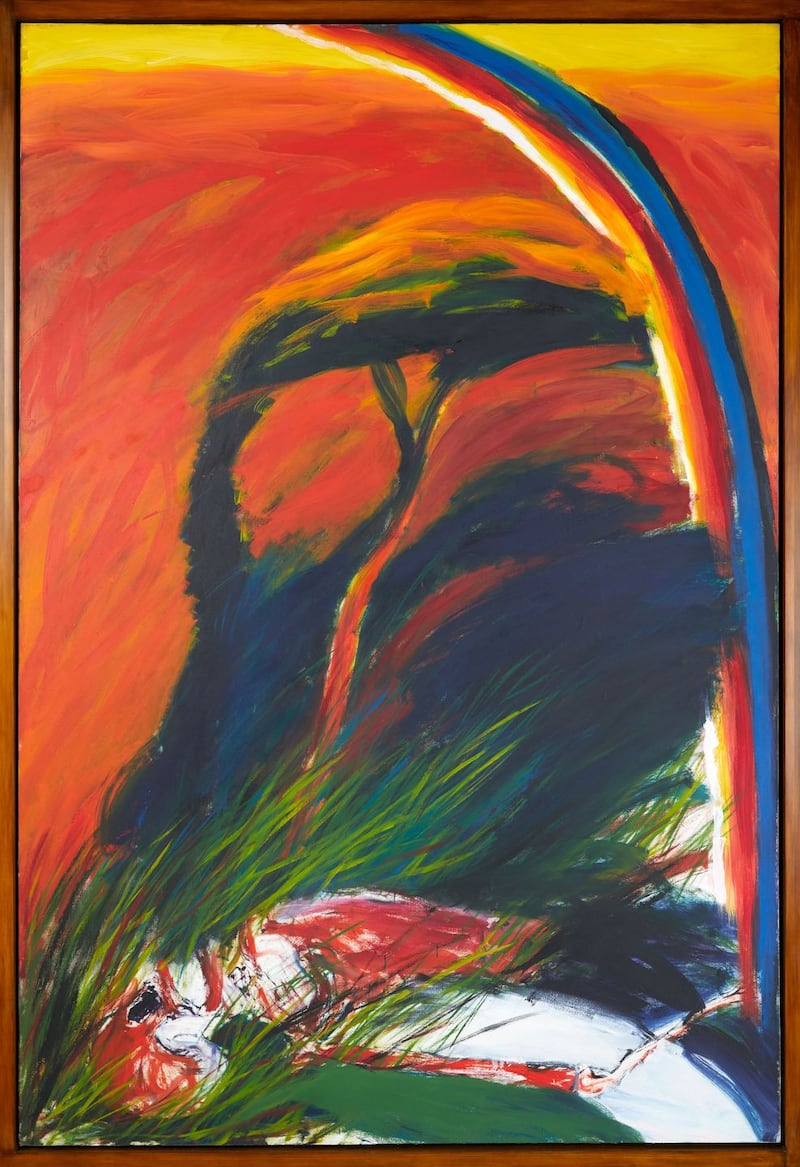
Narrative itself is threatened, Beckett-like, in Lilian Lucy Davidson's Gorta (1946), as the bereaved look past one another, into nothingness. Michael Farrell's Black '47 projects a raking light on Charles Trevelyan arraigned in the dock before a jury of the dead. As if extricating art from amnesia, William Crozier, Farrell, Robert Ballagh and Brian Maguire engage with themes of injustice, cruelty and abuse of power that persist in the growing gap between rich and poor in the world today. How we deal with these issues today is illuminated by throwing light into the dark corners of the past.
Primo Levi suggests that "historical events acquire their chiaroscuro and perspective only some decades after their conclusion". In the late 20th century new forms of expression, ranging from installations to video and site-specific work in the hands of Alanna O'Kelly, show how these experimental approaches negotiate aspects of the Famine, as if unresolved experiences from the nightmare of Irish history (in James Joyce's words) are still seeking expression through form.
- Niamh O'Sullivan is Professor Emeritus of Visual Culture at the National College of Art and Design and curator of 'Coming Home: Art and the Great Hunger', the world's largest collection of Famine-related art, which will be on view in Ireland for the first time this year. The exhibition is at The Coach House, Dublin Castle, March 8th-June 30th; Uillinn: West Cork Arts Centre, Skibbereen, July 20th-October 13th; Cultúrlann Uí Chanáin, Derry, January 18th-March 16th, 2019
Ireland’s Great Hunger Museum: window into the past
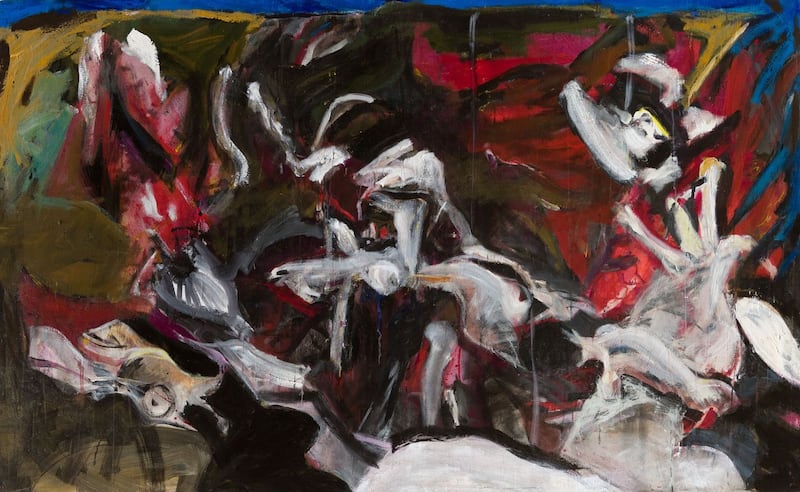
Ireland's Great Hunger Museum at Quinnipiac University in Hamden, Connecticut, acclaimed art collection – the only one of its kind in the world – constitutes an incomparable direct link to the past of almost 6.5 million Irish and 40 million Irish-American people. The death and dispersion of two million people, followed by a further 2 million emigrations to the end of the century, makes the exhibition an important gesture of cultural reconnection. The Irish diaspora defines Ireland's place in the world today. The impact of the Famine is still with its descendants – both at home and abroad.









